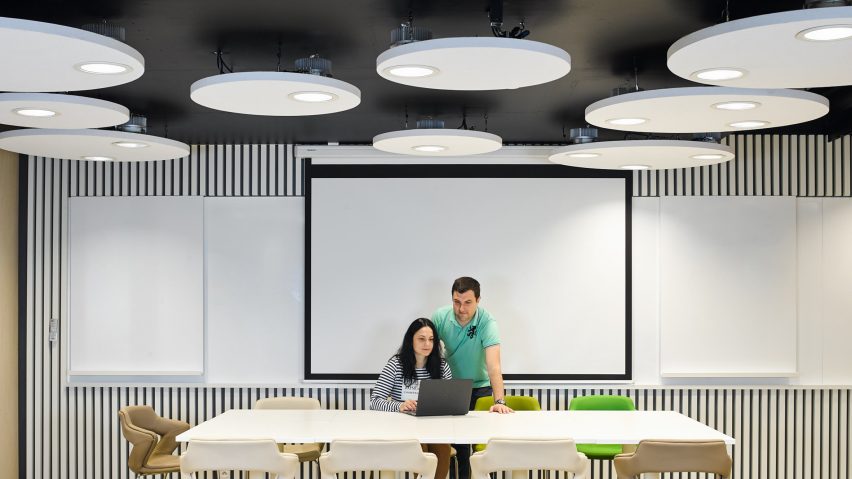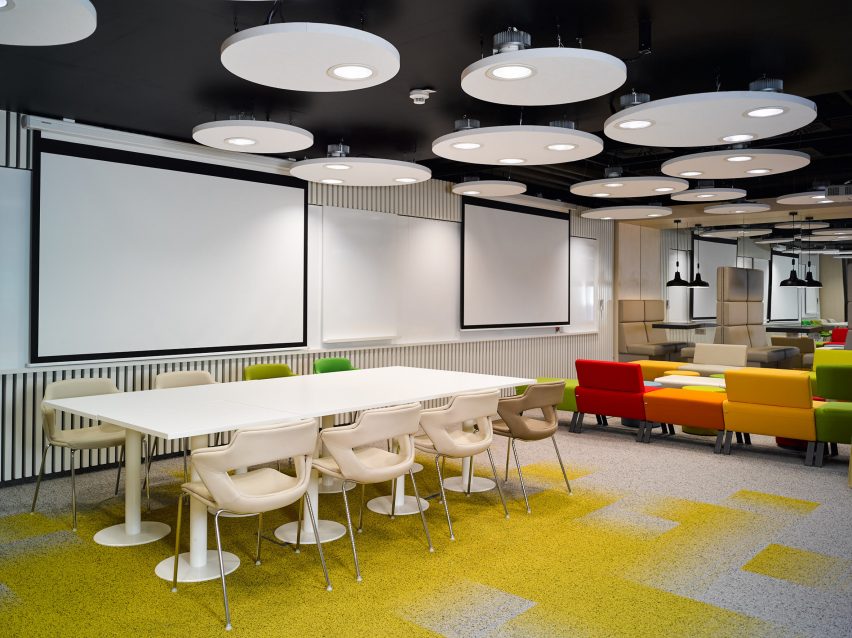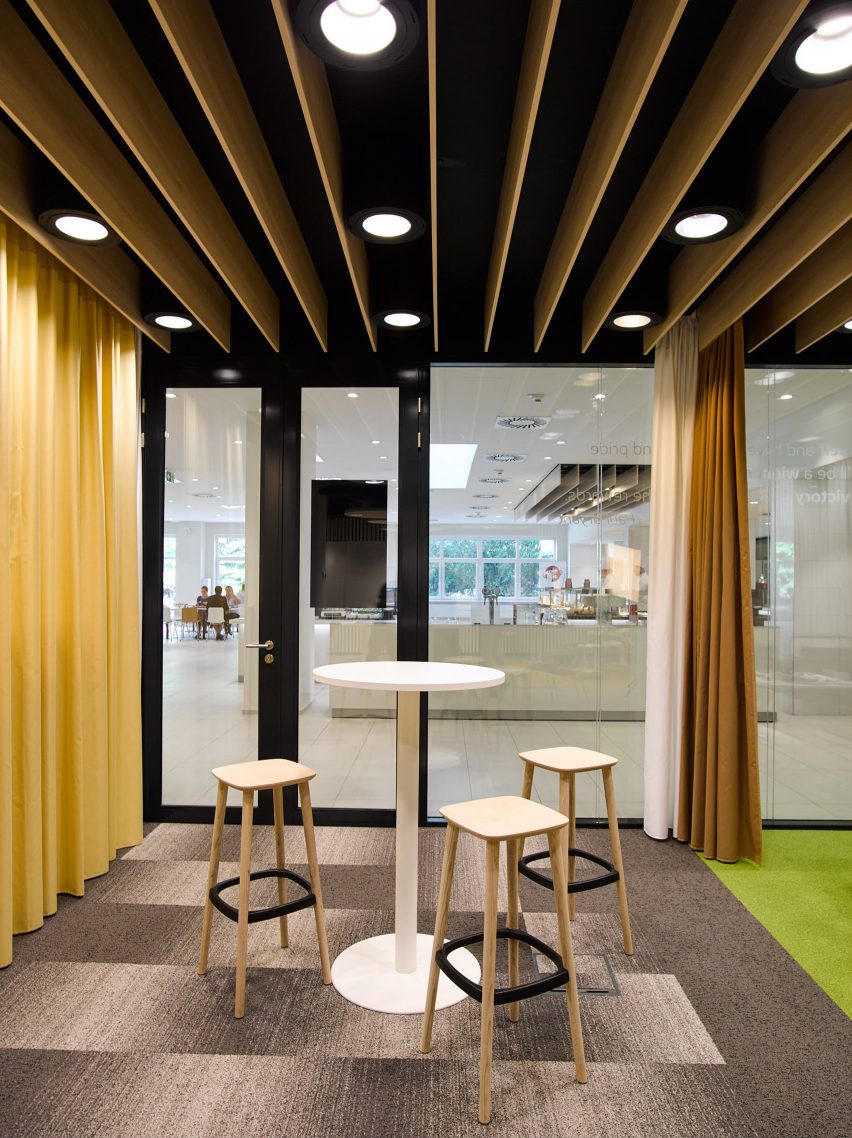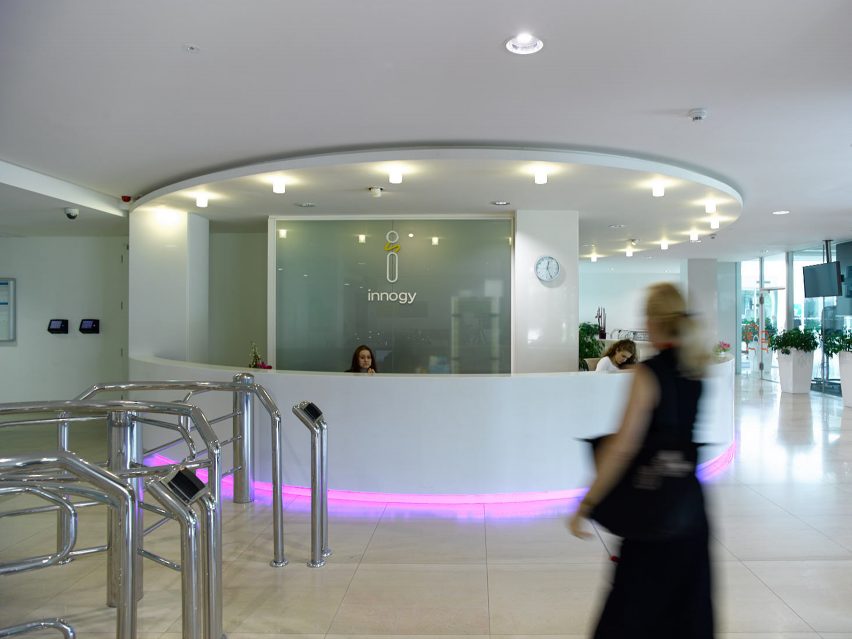
Fluctuating LED office lights offer workers caffeine-like energy boost
Philips has installed a system of LED lights in an office in Prague that are designed to support workers' circadian rhythms throughout the day.
The lights, installed in the refurbished Czech Republic headquarters of energy company Innogy, could provide the same energy hit as drinking a cup of coffee, claim the designers.
"We've taken our knowledge of how light physiologically benefits people from successful projects in hospitals and schools and applied it to the offices space," said Jiří Tourek, country manager at Philips Lighting.
"We know that exposure to a certain comfortable bright light setting for one-hour can provide a mild energy stimulus similar to a cup of coffee and supports wakefulness.”

Along with light intensity, which is measured in lux, energy levels can also be affected by the colour temperature, which is measured in kelvins.
According to Philips, exposing the human body to light settings of 5,000 kelvins at 780 lux for between one and four hours has been shown to increase alertness.
Based on this research, brightness and colour warmth levels have been programmed to change at set points throughout the day to increase office workers' energy at key times.

"At the beginning of the day the office lights mimic natural daylight, providing a useful energy boost," said Tomáš Michna, senior manager for facilities and services at Innogy.
"The light levels decrease until after lunch when we give another boost to help staff over the post-lunch energy dip."
Workers can override the light settings depending on their needs, and the system can also be set to perform a specific task by using wall-mounted touchpad controls. These can also be used to raise or lower the window blinds.

The new lights are part of a complete renovation of the company's 10,000-square-metre headquarters in the Limuzská district of Prague.
A new open plan office design and the adaptable lights were part of an overall plan to "enhance the comfort, wellbeing and productivity" of the 550 employees who work across the three buildings.
The office redesign replaced fluorescent tube lighting with 2,000 LED lights, blinds and control systems, as well as adding a new restaurant serving healthy food and "creativity spaces" for workers.

Also installed were 150 sensors that can detect human presence and automatically turn the lights off should a room become empty.
Combined with the use of energy efficient LEDs, the designers estimate this new system will use 50 per cent less electricity for lighting than the previous fluorescent lights.
On a more public scale, Philips has also started testing the effects lighting can have on the mood of a crowd.
In collaboration with the Intelligent Lighting Institute at Technical University Eindhoven, the lighting designers are currently investigating ways of improving public safety outside the clubs and pubs of the Netherlands longest nightlife street.
Sensors and cameras on the street combined with real time data gleaned from weather reports, social media activity and visitor numbers help build a picture of when the mood might turn ugly. LED lights fitted to lamp posts can then change colour to calm the crowd, and change angles or go brighter to encourage "peer monitoring".